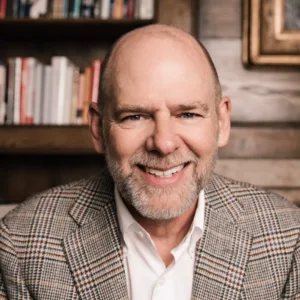- Organization
- September 26, 2023
- Mark Miller
Select Top Talent
Selecting employees is not the same as recruiting talent. The difference between the two is profound. How do you recruit talent? Unfortunately, many leaders do not recruit talent, they select people. To select is to sort through applicants and choose the best one. To recruit is different. Recruiting…

Selecting employees is not the same as recruiting talent. The difference between the two is profound. How do you recruit talent?
Unfortunately, many leaders do not recruit talent, they select people. To select is to sort through applicants and choose the best one.
To recruit is different.
Recruiting is the process of identifying the most appropriate people for a specific role and aggressively pursuing them.
As in most definitions, the words matter. Let’s break this down:
- Process – This implies a pre-determined, well-conceived, repeatable, and disciplined approach to the work. A process involves steps with assigned accountability and measures of effectiveness embedded along the way. Many organizations do not have a process for recruiting talent – does yours?
- Most Appropriate – This part of the definition suggests you know the criteria or qualifications for the role you’re trying to fill. In sports, coaches are looking for the ideal candidate. I believe businesses should do the same. In the end, you may have to compromise on some of your desires. However, you should never settle when it comes to the most critical attributes. Do you know the specific skills your ideal candidate must possess?
- Identifying – After you know exactly what you’re looking for, process comes into play again. What are the steps to find candidates like the one you described? Where have you found them in the past? Where might you find them in the future? A Division 1 basketball coach once said he was personally scouting and recruiting middle school players – middle school! The war for talent is real in all walks of life. To recruit talent, you must first find them.
- Aggressively Pursuing – Once you know what you’re looking for and where you might find it, how aggressive are you? How much time and energy do you invest in the pursuit? A business leader told me his number one need was finding great talent. I asked him how many hours he had personally invested the previous week in his “number one” issue. He said, “Zero.” I don’t think that qualifies as aggressively pursuing talent.
Another thought about aggressively pursuing talent: How strong is your offer? In today’s world, money isn’t the only factor when trying to get someone to join your team. I love the idea of total compensation. This includes income, benefits, and what I call “psychic income.”
Psychic income encompasses all the intangibles. You see this in professional sports from time to time. An athlete will take less money to play for a team with a better chance to win a championship or to live in a better city.
In corporate America, some will work for a company whose purpose or values resonate with their own. Others will value an organization with a reputation for helping people grow. When you put your package together, don’t undersell psychic income; people can’t take it to the bank, but often it can be the difference between winning the deal or not.
To recruit talent, you must first find them.
So, how do you recruit talent? You first decide talent can create a competitive advantage and then you create a process that supports that belief. Then you’re ready for the hard part – you have to work the process.
Comments on Select Top Talent

Mark Miller
Mark Miller is a Wall Street Journal and international best-selling author, communicator, and the former Vice President of High Performance Leadership at Chick-fil-A. Mark’s leadership journey at Chick-fil-A spanned 45 years, and today, he serves as the Co-Founder of Lead Every Day. Mark began writing almost twenty years ago, and with over one million books in print in more than twenty-five languages, his global impact continues to grow.